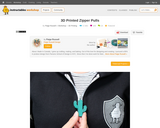
Design and create your own custom, 3D printed zipper pull! This project utilizes Tinkercad and some simple tools.
- Subject:
- Applied Science
- Computer Science
- Engineering
- Material Type:
- Activity/Lab
- Author:
- Paige Russell
- Date Added:
- 01/31/2020

Design and create your own custom, 3D printed zipper pull! This project utilizes Tinkercad and some simple tools.
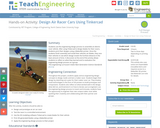
Students use the engineering design process to assemble an electric racer vehicle. After using Tinkercad to design blades for their racers, students print their designs using a MakerBot printer. Once the students finish assembly and install their vehicle’s air blades, they race their vehicles to see which design travels the furthest distance in the least amount of time. A discussion at the end of the activity allows students to reflect on what they learned and to evaluation the engineering design process as a group.
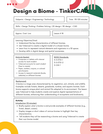
In this lesson, students will embark on a journey of discovery by researching a specific biome of their choice, such as rainforests, deserts, or coral reefs. They will delve into the unique characteristics, flora, and fauna that define their chosen biome, gaining insights into its environmental challenges and adaptations. Using Tinkercad, students will then design and create a miniature 3D model representing their biome, incorporating elements like plants, animals, and geographical features. Through this hands-on activity, students will not only enhance their digital design skills but also deepen their understanding of ecosystems, biodiversity, and the delicate balance within different biomes. This lesson fosters creativity, scientific inquiry, and a holistic appreciation of the natural world in STEM education.
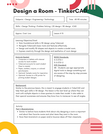
Students are tasked with designing a room of their choice in TinkerCAD. After learning the basic tools and navigation from modeling objects, they can begin to model collections of objects enabling them to visualize and personalize their dream spaces. Experimenting with layout, furniture, and décor helps develop their spatial awareness and design skills. The lesson concludes with an (optional) presentation, where participants present their room designs and reflect on their creative decisions and practical layouts.
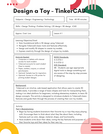
In this TinkerCAD lesson, students design their favorite toy using 3D modeling software. They learn basic TinkerCAD tools and techniques to create and customize their toy designs. Throughout the lesson, students apply principles of geometry and spatial reasoning while fostering creativity and problem-solving skills. The session concludes with students presenting their designs and discussing the features and functionality of their creations.
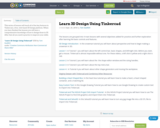
This series of lessons will teach all of the key features in Tinkercad, a free, web-based 3D design platform. When you have finished the lessons you will have a comprehensive knowledge of how to design/draw in 3D. After that all you need is practice to improve your skills.
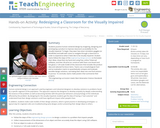
Students practice human-centered design by imagining, designing and prototyping a product to improve classroom accessibility for the visually impaired. To begin, they wear low-vision simulation goggles (or blindfolds) and walk with canes to navigate through a classroom in order to experience what it feels like to be visually impaired. Student teams follow the steps of the engineering design process to formulate their ideas, draw them by hand and using free, online Tinkercad software, and then 3D-print (or construct with foam core board and hot glue) a 1:20-scale model of the classroom that includes the product idea and selected furniture items. Teams use a morphological chart and an evaluation matrix to quantitatively compare and evaluate possible design solutions, narrowing their ideas into one final solution to pursue. To conclude, teams make posters that summarize their projects.